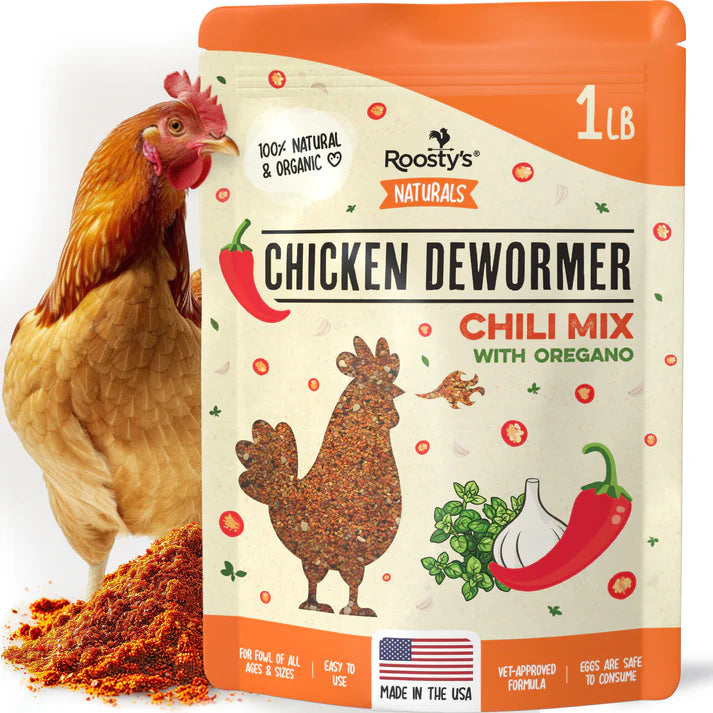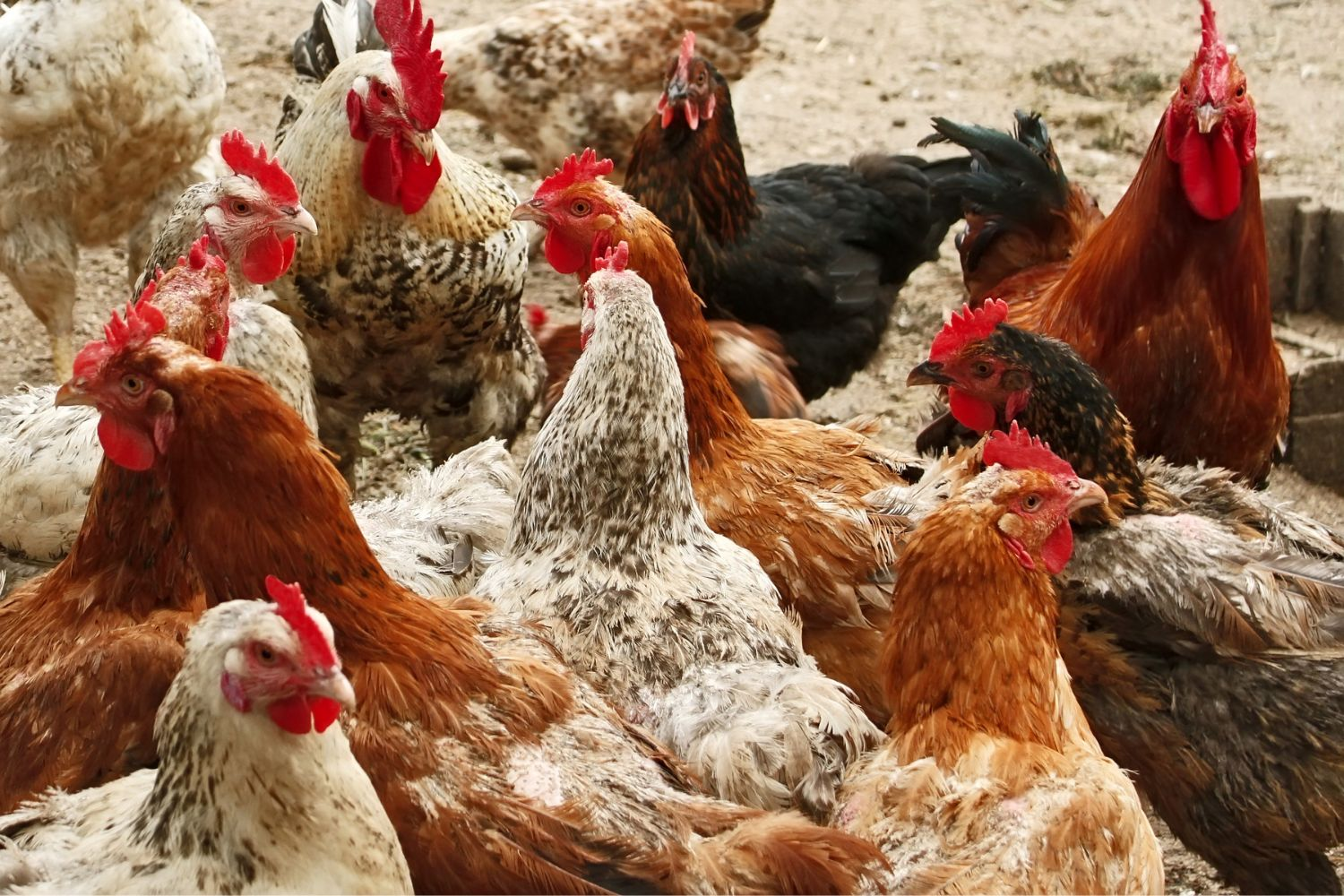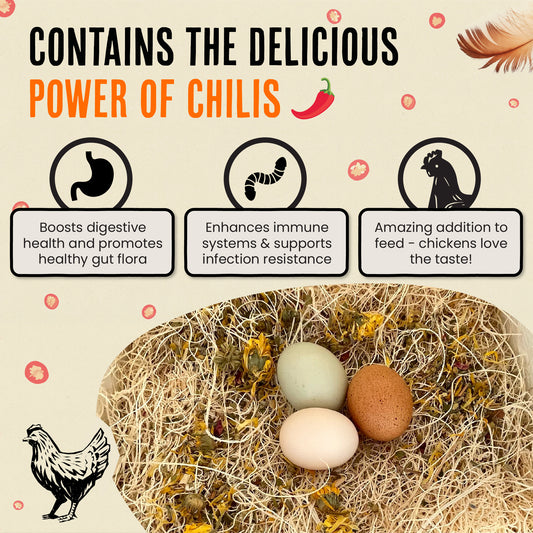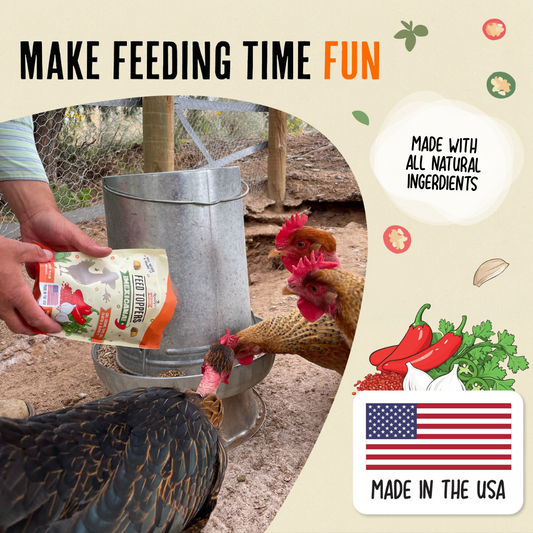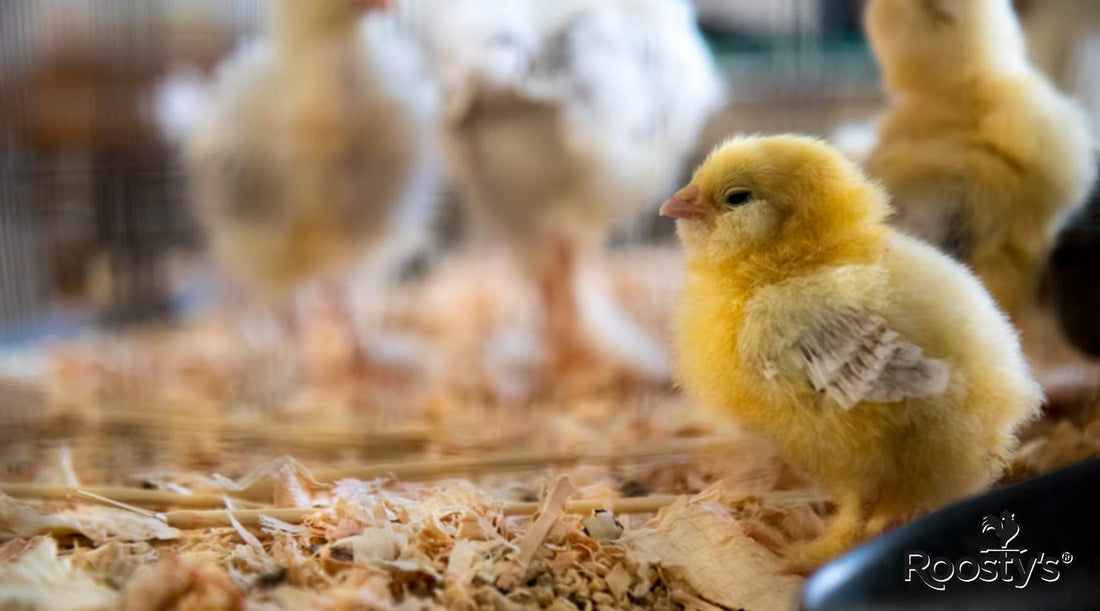
Discover the Best Chicken Bedding for Optimal Comfort and Health

If you're feeling confused about which chicken bedding to choose for your birds, you're not alone.
Right now, there are dozens of options on the market, each offering something slightly different. Sometimes it’s hard to determine which one to choose.
That's why we've written this guide. We've researched practically every bedding option out there so you don't have to.
Our goal is to explain everything you've ever wanted to know about choosing the best chicken bedding for optimal comfort and health.
By the end of this post, you will know which materials to select to keep your birds healthy and happy year-round.
Specifically, we discuss the best chicken bedding options, how to choose a bedding material for your birds, and how various products compare. We also take a look at composting bedding and the best winter options.
Interested? Read on to learn more.
Top Chicken Bedding Options
Let’s cut straight to the chase: what are the top chicken bedding options?
Straw
Straw is at the top of many people’s chicken coop bedding options. This agricultural byproduct is soft, strong, and relatively good at absorbing waste.
The pros of straw include its affordability, availability, and ease of storage. Its low nutrient content also means chickens are less likely to nibble on it and get impacted crops.
However, it does come with some minor downsides. For instance, straw does not function in the same way as cat litter, meaning you’ll need to change it often.
It is also less absorbent than other bedding options, such as hay, meaning it can start to smell in as little as a day of heavy use.
Hay
Hay is perhaps the next most popular bedding option after straw. Chickens love it because it is a comfortable bedding material with good insulation. It makes excellent nesting box material and encourages birds to lay more regularly.
Hay’s main benefit is that it is readily available. Most farm and pet stores keep a supply of hay in their inventories, meaning you can pick it up pretty much anywhere.
Biodegradability is another benefit. Hay will break down in your compost heap and become rich, fertile soil.
However, it’s not perfect. For example, hay has lower absorbability than some of the bedding options discussed above, including straw.
It is also relatively quick to break down. Decomposition after exposure to chicken waste means you’ll need to muck it out more frequently, which could cost you more money.
The nutritive value of hay is also an issue. While straw offers virtually no nutrition, hay retains some nutrients once dried.
Consequently, chickens are more likely to eat it, which can lead to an impacted crop. It may also attract pests, such as straw itch mites, which feed on it.
Sand
Sand is another option for chicken coops. The main benefit is its excellent drainage qualities. Sand allows urine to drain through it, helping to keep the hen house dry.
This process inhibits bacterial growth and ammonia buildup, protecting your birds’ respiratory systems.
Sand is also long-lasting. Unlike organic bedding, it doesn’t break down quickly. Properly maintaining it can help it last a long time (and indefinitely if you thoroughly wash it after each coop cleaning session).
Sand is also famous for generating less odor than some other bedding. The material drains pungent waste liquids into your coop’s waste tray for easy daily removal and cleaning.
Lastly, sand also makes it easy to clean up droppings. Solid waste sits on its surface, letting you scoop it up and throw it away.
Of course, sand has some drawbacks you should be aware of. Firstly, it lacks insulation. Unlike straw (which contains air pockets), sand tends to be highly compact, and chickens can’t snuggle into it during the winter.
It’s also heavy. Made of rock, it weighs significantly more than straw or other organic materials per unit of volume.
Finally, sand requires regular raking to prevent waste buildup. Failing to do this daily can cause your coop to become unsanitary.
Pine Shavings
Pine shavings are also a popular choice of chicken coop bedding. People choose them because they smell good and contain a special aromatic resin that naturally repels mites, insects, and flies.
Being made of thin pieces of wood, they also offer excellent absorbency. The material soaks up droppings and spilled drinking water, keeping the coop smelling fresh.
Generally, chickens find pine shavings comfortable and safe. The material creates thick, warm bedding that birds can snuggle into and is safe if eaten because it is a natural product. It’s also compostable, available at most farm and pet stores, and easy to handle.
However, pine shavings can cause problems. Many products contain high levels of dust that can cause respiratory issues in chickens. Tiny particles can become lodged in their lungs, leading to breathing difficulties.
Over time, dust particles may cause long-term conditions to develop, including cancer. De-dusted varieties – products with small particles removed – deal with this issue somewhat.
However, eliminating dust is challenging and may still get into your chickens’ lungs.
Pine shavings are also more costly than other bedding options in some areas. Straw might be more cost-effective, depending on your location.
Finally, pine shavings require regular cleaning. While they have high absorbency, they need mucking out often.
Dried Leaves
Dried leaves are another option for chicken coops. Many people use them as an eco-friendly, natural option.
However, dried leaves break down quickly. Moist leaves become a claggy pulp when they come into contact with drippings, making them hard to clean. Their absorption capabilities are also low.
Leaves must also be dry before you place them in the coop. Wet leaves can harbor mildew and other biologicals that could harm your birds.
Your best bet is to sprinkle a few leaves on top of regular bedding, like straw or hay. It improves environmental friendliness while providing enrichment for your birds.
Shredded Paper
Shredded paper is also an option for chicken coop bedding. It has the benefit of being cheap and accessible, especially if you shred a lot of paper. It’s also low in dust and (usually) compostable. Chickens are less likely to eat it than hay or straw because it is less palatable.
However, it comes with significant downsides. The main problem is absorbability. Paper isn’t particularly good at soaking up chicken waste (and can become a fragile mush).
It can also contain substances that harm your chickens, including chemicals used to process paper and ink. For example, newspaper ink contains aromatic hydrocarbons, toluene, and naphthylamine, all documented to cause damage.
Paper is also higher in ammonia than conventional chicken bedding options. Releasing the chemical can cause respiratory problems in birds and their chicks, so it’s something you want to avoid.
Lastly, some magazines and newspapers use heavy metal-based inks. Again, these can damage your birds and reduce their fertility.
Hemp
Finally, some owners use hemp in their chicken coops. It is made of hemp plant fibers and may offer significant benefits compared to other chicken coop bedding options.
Hemp, for instance, offers superior absorbency than hay or straw. Thanks to its unique fibrous structure, it can retain moisture more effectively than other bedding materials.
It is also low-dust. Hemp fibers are excellent at maintaining their integrity, even after drying and processing. This property reduces the release of small particulates that could damage chickens’ lungs.
Another benefit of hemp is its odor control. Like pine shavings, it contains natural substances that neutralize smells and repel insects, keeping your coop smelling fresh.
Finally, hemp is sustainable. Being a fully biodegradable product, it will eventually break down in the ground, turning back into soil again for reuse elsewhere.
Choosing the Best Bedding for Your Chicken Coop

As discussed in the previous section, the type of bedding you choose can impact your chickens, your wallet, and even the environment. Getting it right is critical.
But how do you actually choose the best bedding for your chicken coop? That’s what we'll discuss in this section. You’ll learn how different materials differ and how to pick the one that makes the most sense for your situation.
Ease of Cleaning
First, you’ll want to consider the ease of cleaning your coop bedding. Sand tends to be pretty straightforward: just hose it down. Straw and hay, on the other hand, tend to hold onto soiled sections, making them impossible to reuse.
On the flip side, sand is heavy and harder to carry. By contrast, wood shavings tend to be considerably lighter. You might be better off with the latter options if you have a large hen house or don’t want to shovel heavy sand.
Climate
Next, you’ll want to factor in the climate in your area. Some beddings perform better than others, depending on temperature and humidity.
For instance, sand tends to freeze when soiled in the winter, creating unpleasant conditions that could damage your chickens’ feet or leave them feeling cold. Likewise, leaves may develop mildew in humid environments, making them unsuitable for semi-tropical areas.
By contrast, straw and hay are great when the temperature plummets because they provide a lot of insulation. However, sand might be better in the summer months to keep hens warm and improve coop hygiene.
Cost
Cost is another consideration. Bedding prices vary significantly, depending on the type you choose.
Generally, straw, hay, and pine are the most widely available in pet and agricultural stores. Commercial outlets will only rarely sell paper and leaves.
Straw, hay, and pine are also cost-effective, while specialist materials like hemp are generally pricier but provide additional benefits. You’ll need to weigh up your options and decide whether cleaner coops are better.
Sustainability
You may also want to consider sustainability when choosing coop bedding. Straw, hay, pine shavings, hemp, and leaves are biodegradable, natural products that can become good soil.
Paper doesn’t break down as fast and may leach toxic ink chemicals into the environment, and sand won’t degrade (though it shouldn’t cause harm).
Absorbency
Absorbency is another consideration. Bedding material should be able to soak up your chicken’s waste and prevent it from smelling too much.
Again, straw, hay, and sand are excellent at absorbing droppings. Hemp and pine shavings might be even better.
However, you’ll also want to consider bedding’s propensity to develop mold and mildew. Some highly absorbent materials can also harbor unwanted fungus.
Sand is the lowest-risk bedding option in this regard. However, the risk increases for straw and hay, especially when they get wet.
Comfort
The comfort level of bedding should also be a factor in your considerations. Ideally, you want it to be soft and plush to encourage chickens to lay, particularly in nesting boxes. Birds need sufficient material to build nests and keep any eggs warm.
Hemp, hay, and straw are likely the most comfortable options for most chickens. These materials allow birds to sink into a nest-like structure, which makes them feel comfortable.
Sand and pine shavings allow this to a lesser degree. Try different bedding products and see what your birds prefer.
Pest Resistance
You’ll also want to consider the bedding’s pest resistance, which is essential if you have mites and lice in your area. Sand is perhaps the most resistant because it is inorganic. Hemp is a close second because of the natural anti-insecticidal oils it contains, as discussed above.
Straw, hay, and pine shavings are significantly less resistant to pests. As such, you’ll need to clean them out more often.
Dust Levels
Finally, you’ll want to consider the dust levels of your bedding. Low-dust options include sand and dust-extracted pine shavings and straw. Ideally, choose these regardless of the age of the chickens you keep, but especially if you have chicks.
The Benefits of Wood Shavings for Chicken Coops

Wood shavings are a popular and relatively common chicken coop bedding option that offers various benefits.
Many coop owners start by laying a thick layer and then periodically stirring fresh droppings into it with a rake. Daily management can allow you to swap out old wood shavings for fresh ones weekly, reducing costs.
So, what are the benefits of wood shavings for chicken coops?
- Available nearly everywhere
- Highly cost-effective
- Naturally compostable
- Contains compounds that repel insects
- Low dust if using a dust-extracted product
- Provides a comfortable surface for chickens to lay and roost
- Lightweight and easy to handle
- Relatively absorbent
- Contains compounds that help control odors
If you're the type of person who loves a fresh-smelling chicken coop, then wood shavings are one of the best options. Pine's beautiful smell can create an uplifting experience.
Winter Tips: Best Bedding for Chicken Coops
Chickens can get too cold in the winter, and bedding can freeze, leading to various health problems and even the loss of some birds. Choosing the right bedding for cold weather is essential.
Fortunately, this section can help. We present some tips for winter chicken coop bedding to ensure your birds remain warm, healthy, and cozy in the bleakest of seasons.
Tip 1: Put Extra Bedding in the Nesting Box
Putting extra bedding in your nesting boxes encourages your hens to lay eggs and keeps them warm. Don’t be afraid to stuff the box with hay or straw so birds can get extra insulation on all sides. Don't worry: chickens will find a way inside and make a cozy nest in no time!
Tip 2: Add Roosting Bars
We also suggest adding roosting bars to your coop if it doesn’t have any pre-installed already. These features provide somewhere for birds to perch at night, helping to protect them from the cold coop floor and keep their feet warm.
Adding a little bedding around roosting bars can also help. Extra insulation maintains a higher temperature.
You can also experiment with various deep bedding methods. The idea here is to turn the interior of the chicken coop into a kind of composting heap to create extra heat.
The way it works is pretty simple. Instead of cleaning out the coop, simply lay layers of fresh bedding on top, allowing the old material to rot underneath. The resulting composting process creates additional heat, while the new bedding layers ensure your coop remains hygienic.
Tip 4: Use Straw, Pine Shavings, or Hemp
Another pro tip is to use the most suitable bedding for cold conditions in your chicken coop. Straw is an excellent insulator and keeps chickens warm even on the coldest nights. It’s also affordable and available nearly everywhere, as discussed above.
Choose straw that comes in different lengths. A combination of longer and shorter strands makes it easier for your birds to build nests and stay toasty.
Pine shavings are another option for cold weather. While birds can’t make elaborate nests from it, it offers good insulation and high absorption, helping to manage droppings when evaporation is low.
Finally, you might want to consider hemp if it is available in your area. This grass-like substance offers exceptional insulation and absorption properties, helping to keep the coop cool and dry.
Tip 5: Avoid Moisture-Prone Bedding
Finally, avoid using moisture-prone bedding options. Materials with low absorbability quickly become saturated in cold weather and can freeze solid.
Which is Better: Straw or Pine Shavings for Chicken Coops?
Straw and pine shavings for chicken coops are both excellent bedding options. Each offers high absorbability and reasonable insulation. However, one may be more suited to you than the other. It all depends on the context.
Situations in Which Straw is the Better Option Include:
- When you want to keep birds warm during winter: Straw offers ample insulation, and chickens can easily rearrange it into nests and warm burrows.
- When you want to keep nesting boxes warm: Straw is even better for birds laying eggs, providing a cozy environment when temperatures plunge.
- When you want a sustainable and eco-friendly alternative: Straw is a 100% natural product and fully biodegradable. It also composts over time.
- When it’s available year-round: Straw is produced on virtually every grain farm in the country, making it available practically everywhere.
However, There Are Also Some Situations Where Pine Might Be the Better Option:
- When you want to control moisture levels: Pine shavings have excellent water absorbency properties, keeping coops relatively dry, even during heavy soiling and cold weather.
- When you want to reduce odors: Pine shavings contain elements that reduce the risk of bad smells.
- When you want easy-to-handle bedding: Pine shavings are lightweight but cover a large area. Carrying them to your coop is easy.
- When you want to protect chickens’ respiratory health: Manufacturers now make dust-extracted products that contain fewer small particles that could get stuck in your birds’ lungs.
Of course, you can use straw and pine shavings for chicken coop interiors. For example, you could experiment with placing straw in nesting boxes and wood shavings in the main living quarters.
In general, pine shavings are excellent for managing bad smells and moisture, while straw makes for the coziest, plushest bedding. Whether you choose pine shavings or straw bedding is entirely your choice.
In many cases, it comes down to your situation and personal preferences. Both are excellent options for all seasons.
Composting with Chicken Bedding: Best Practices
Composting chicken bedding can be a great way to recycle resources and get more value from your birds. Waste from the coop can create large volumes of soil over time that you can use in your garden.
Chicken litter contains a high nitrogen concentration and will usually compost in around a month to six weeks. However, some bedding materials can extend the decomposition period by several months, so you may need to wait a while for your soil.
This section lists some best practices to ensure you get quality compost from bedding for chicken coop interiors. Following these practices could help you avoid problems and make the most of your birds’ waste.
1. Use Compostable Bedding
Don’t put sand in your compost bin. It is inorganic and won’t biodegrade. Only use hay, hemp, straw, or pine shavings for chicken coop composting. Bacteria can break down these materials, transforming them into soil particles ready to nourish new plants.
Be wary of any bedding products that contain synthetic components. These may not compost naturally, even if you have all the proper equipment.
2. Add Nitrogen-Rich Elements
While the best bedding for chicken coop owners is usually high in carbon, it doesn’t always contain much nitrogen. Unfortunately, that’s a problem. Low nitrogen levels can actually slow down the decomposition process.
Fresh chicken droppings contain 0.5% to 0.9% nitrogen. However, you can accelerate the composting process by adding other nitrogen sources, including food scraps and grass clippings. This combination helps create a rich, balanced, and fertile soil.
3. Add More Carbon Sources
The best chicken coop bedding for warmth and comfort isn’t necessarily the best chicken bedding for composting. If your coop bedding is mostly straw or pine shavings, it may not produce high-quality soil.
Fortunately, you can improve the situation by adding extra carbon sources. Good carbon sources for composting include:
- Plant stalks
- Garden waste
- Plant twigs
Basically, clippings from your garden! Adding these elements to your compost heap provides more food for bacteria, helping to accelerate the composting process.
4. Keep an Eye On Moisture Levels
Another best practice for chicken bedding composting is to monitor moisture levels. The pile should feel like a wrung-out sponge, not sopping wet. A bit of dampness is all you need. Excessive wetness can hinder bacteria and other creatures from breaking down the materials effectively.
If your compost is too wet, add more carbon sources, such as wood chips for chicken coop interiors. Supplementing these helps to balance out the moisture content of the compost, facilitating more balanced decomposition.
5. Turn Your Compost Regularly
You should also turn your compost regularly to ensure plenty of oxygen inside. Too much material stuffed into a compost bin can limit aeration, slowing decomposition.
Fortunately, you don’t have to turn it over often. Once every couple of weeks should suffice.
6. Maintain High Compost Heat
Another best practice is to maintain high heat in your chicken coop compost. Doing this three or four days per week keeps pests at bay and accelerates decomposition. Aim for a temperature of 130°F to 140°F for optimal breakdown.
7. Ensure Full Decomposition
You should also ensure your compost fully decomposes before spreading it in your garden. The resulting soil should look dark and crumbly. Don’t use it if there are still big pieces of straw sticking out at odd angles.
8. Don’t Use Composted Chicken Bedding on Edible Crops
Finally, avoid applying composted bedding onto edible crops mid-way through their growth. Instead, use it as an addition to existing soil before planting.
The Importance of Bedding for Chicken Runs

We've already discussed what to use for chicken bedding inside the coop. Now, let's explore why bedding for chicken run extensions is essential.
Prevents Bumblefoot
Chickens placed on mesh or concrete floors are at a higher risk of developing bumblefoot. This condition occurs when hard, abrasive surfaces damage birds' foot pads, creating openings for staph infections to enter through the skin.
Using soft bedding prevents this. Straw, hemp, hay, and pine shavings are not abrasive or hard, protecting the delicate tissue on the soles of their feet.
Enhances Pest Control
Another reason for placing bedding in the run is that it may enhance pest control. As discussed earlier, hemp contains natural oils that deter critters from entering the coop and causing damage.
Makes the Run Easier to Clean
Straw, hemp, sand, and hay for chicken coop runs also make them easier to clean. Instead of trying to pick droppings up off the floor, you can rake them away along with the bedding. The result is a safer environment for the birds.
Prevents Soil Erosion
Another reason to use bedding outside is that it reduces soil erosion. Chickens will usually destroy a lawn in as little as a week, removing all signs of plant matter and pulling up roots. When the rain comes, it can magnify the damage, washing the soil away and making the ground unstable.
Using the best bedding for chicken coops in the run prevents this from happening. It creates a thick barrier that prevents chickens from pecking away the structure that holds the soil in place, preserving it long-term.
Reduces Odors
Finally, using hemp, hay, or pine shavings for chicken coop runs can significantly reduce bad smells. Natural neutralizing compounds prevent pungent fumes from droppings affecting the neighbors.
Final Verdict
So, what have we learned? This post showed that there is no single best bedding material for chicken house interiors; it depends on its purpose. Some bedding materials are better for nesting boxes, while others are superior for hotter climates.
More specifically, we learned that:
- Chicken bedding for winter needs to offer insulation and be warm and comfortable.
- Straw, hay, wood shavings, and hemp are all excellent compostable natural bedding options.
- Leaves (and similar materials) are natural and eco-friendly options, but they may not be suitable for maintaining optimal chicken conditions.
- The best bedding for a chicken coop in winter is probably hay because of its insulating properties, though straw is a close second.
- The best type of chicken bedding ultimately depends on your budget, climate, priorities, and personal preferences.
- Bedding for chicken runs is an excellent idea for preventing disease, reducing the risk of pests, and maintaining soil integrity.
Take time to revisit this post and consider the discussion as a whole. Strive to balance your chicken coop bedding needs to determine the best option for you.
Feel free to experiment with different options until you find one that works best for you and your chickens.
